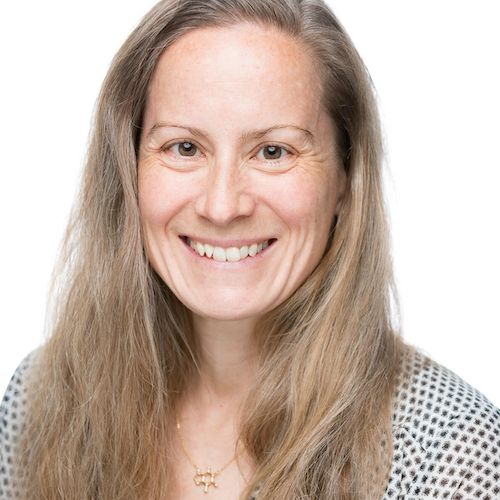Online learning, redefined

As top-tier university lecturers and startup innovators, David Shrier and Beth Porter are highly regarded in the edtech world. Their present ambition is to reinvent online learning by combining cognitive science with sophisticated technologies, as Tech For Good found out.
In the field of learning, one of the 21st century’s major advancements has been the shift to online. Technology has helped offer opportunities to a far broader demographic of students and professionals, with new online platforms attracting millions of users and many traditional centres of education pivoting to facilitate remote learning at scale.
The coronavirus pandemic has accelerated this trend. Most of us, confined to our homes, have grown reliant on technology to complete our work or studies. In education, distance learning has become the new normal – and, for many institutions, it will be the preferred method of teaching for the foreseeable future. Cambridge University, ranked the third best in the world, made headlines in May when it committed to a full academic year of exclusively-online learning.
Remote education is here to stay, that’s for certain. But for those charged with delivering these online classes and training programmes, a significant challenge still exists: exactly how do you create truly effective remote learning alternatives which get somewhere near to the face-to-face experience?
David Shrier and Beth Porter – both lecturers at the prestigious Massachusetts Institute of Technology (MIT) – have combined their professional and academic endeavours to try and solve this problem, utilising some of the most advanced technologies of our age.
“As I’ve gone through my career and created new and more evolved software-engineered solutions for learning, what I’ve found is that people really make poor use of technology. We felt inspired by the problem of how we make an online learning programme that is really excellent in all dimensions,” says Porter.
Porter has dedicated her professional life to transforming learning experiences. Along with her commitments to MIT and Boston University (BU), she is also CEO of Riff Analytics, a software company with a social learning platform for people and companies. Previously she held senior product roles at the likes of Pearson Education and edX. Shrier acts as Chairman of Riff Analytics but is also a highly-regarded author, lecturer and advisor to public bodies and private companies on technology-powered growth and disruption.


The pair’s vehicle for driving change in education is Esme Learning. Co-founded as a means to synthesise their knowledge in teaching and technology, Esme is working with some of the world’s foremost universities to reinvent remote learning classes using the tools available through the Riff Analytics platform. The Esme mission is one borne out of many years of frustration at the conventional online learning approach, as Shrier explains
“Around five years ago, a professor at MIT – Alex “Sandy” Pentland – and I came across an opportunity to really reinvent what online learning looked like. So at the time, in 2015, a lot of online learning was really bad television. Someone would say, ‘let’s just take a camera, and stick it in the back of a classroom, and film someone give an hour-long lecture, stick that up on the internet and that will be online learning’.
“And then for these Massive Online Open Courses (MOOCs) that you read about, where they say they have 50,000 students signed up, the completion rate – meaning the number of people who actually finish the class – was at 3.13%. So out of the 50,000 people who start, only about 1,500 finish. We looked at that and said, ‘maybe if we take a lot of lessons from cognitive science and neuroscience, and we take some new technology and new approaches, we could really make online learning better’.
“Sandy and I put together a handful of classes and they reached into 140 countries and successfully engaged more than 15,000 innovators across topics like fintech, blockchain and data science. That was a really interesting experience for us but we felt there was still more to be done, and that there was an opportunity to take next-gen research and next-gen platforms and put them to work. That led to the birth of Esme Learning.”
"We very much would like to change the world, but we’re not arrogant enough to think we can do it just by ourselves. What we know we can do by ourselves, in our startups, is come up with cutting-edge ideas and then validate that they work at scale” - David Shrier
Shrier asked Porter to lead on the side of academic research and Esme went about building courses based on a disciplined methodology founded in science. One of the key outcomes from research in this area is that individuals learn better in teams – and that is where the technology from Riff Analytics perfectly complements Esme’s peer learning approach.
A collaborative tool underpinned by artificial intelligence (AI), Riff’s platform helps create meaningful group interactions online by providing real-time feedback on metrics such as speaking time, influences, interruptions and affirmations. It is designed to help businesses better communicate and collaborate remotely. For Esme, it is all about “re-architecting” group collaboration in a learning context and generating more satisfying results.
“In small teams, when you’re trying to accomplish complex tasks, you need everybody’s voices to be heard and you need there to be relative balance in the conversation,” Porter adds. “There can’t be a rush to close down the conversation or cut off the discussion; you need to make sure that there is lots of dynamic speaking time going back and forth, because that high exchange rate is highly indicative of whether a team can be successful working on a non-routine problem together.”
Early examples have achieved completion rates above 90%, while the courses have been delivering up to a 1,800% improvement on student satisfaction when compared to other digital offerings. Now Esme is doubling down on its efforts in industry and exploring how it could quickly upskill executives and workers.
The company, which launched a year ago, recently announced its involvement in the Oxford Cyber Futures project. A joint enterprise between Oxford University’s Saïd Business School – where Shrier is a programme director – and Mastercard, Oxford Cyber Futures is a six-week, all-digital programme aimed at educating cybersecurity professionals on critical topics in AI, cybersecurity, threat analytics, data privacy and digital ethics.
“You have a lot of measurable events that happen in an online course that you can really not easily do in an in-person course. So where you might lose some of the body language stuff that happens when you’re in-person, and the social dynamic, you do gain an enormous amount of measurability of the environment” - Beth Porter
Oxford Cyber Futures, which launches this summer, is underpinned by Esme’s course methodology and technology – with the ultimate aim to show that if you practice good cybersecurity, you actually can create new business opportunities. The idea was first discussed when Shrier met with Paul Trueman, Mastercard’s SVP of Global Enterprise Risk and Security, in a pub two years ago.
“We had a conversation about how we could create a really engaging educational programme from a top-tier university and deliver it in such a way that would help not the CISO (Chief Information Security Officer), but everybody else who talks to the CISO – so everybody else in the business. That was the birth of Cyber Futures,” Shrier reveals.
“For decades, people have been selling cybersecurity solutions based on fear. If you’re in ecommerce, there’s more than $300 billion a year of lost revenues for companies who have bad security and fraud management. If you improve that, you can dramatically improve business performance from growing revenue. Then on top of that, there are a couple of trillion dollars of expected business losses due to hacks coming within the next couple of years. So we’ve got a big multi-trillion dollar problem that we need to solve.”
The programme’s approach to remote learning is pioneering. After lessons on a range of cyber topics, participants will be thrown into a cyber-attack simulation to assume the roles of senior executives at a fictional company. The simulation then responds to the action taken by the participants.
While this may sound unusual on the face of it, the underlying methodology is rooted firmly in cognitive science – and both Porter and Shrier are convinced it will result in improved learning outcomes and ergo a greater degree of knowledge around the basics of cybersecurity.
“The main thing is that the experience is immediate,” explains Porter. “People do still read a lot of content and learn from it, they watch a lot of content and learn from it, but the immediacy of the moment of testing whether they’ve learned something is what we capitalise on with these online courses. That quick reinforcement is just part of how cognitive science works, which is that if you don’t give people a chance to test that knowledge right away, they’ll lose it.”
Shrier adds: “Part of how our classes operate is that they’re designed to drive immediate applicability to work. With Cyber Futures, you will walk out of that six-week experience with a new cyber opportunity idea that you could apply at work tomorrow. And along the way, every single week, you’ll be getting tools and frameworks that you could apply at work the next day. People tell me when they take our classes that it’s the immediate applicability to work that makes them extraordinary and different.”
“There was an opportunity to take next-gen research and next-gen platforms and put them to work. That led to the birth of Esme Learning” - David Shrier
Porter and Shrier exude passion about online education and its power to create better outcomes through tech-enabled, experiential learning. In fact, the pair are convinced that – certainly in some aspects – the quality of the learning matches or even exceeds that delivered in lecture halls and training centres.
For Shrier right now, this isn’t about one method being better than the other – it’s about a service that is “differently good” to the other. Though he doesn’t hide his ambition to take online learning even further.
“Our goal over time is to actually transcend, to actually create something that is better than in-person,” he reveals. “That’s really difficult, and Beth and I both keep ourselves close to the veracity of that statement by actually teaching in person. But we have had success in creating a ‘differently good’ experience – it’s not the same as being in the classroom, but it has other benefits that outweigh the drawbacks, so it works out at a net even. But we want to go beyond that.”
The capability to measure the efficacy of teaching methods is one of the main benefits of Esme’s model. Porter says this is one facet where online beats face-to-face, with in-person teaching being historically difficult to appraise.
“I have, on average, 50 people in my IT strategies class that I teach at BU,” she adds. “In that class, we break out into small groups, we have very deep discussion topics that I want our small groups to engage in, and then we have a period of sharing. Yet I can only visit so many groups, I am only one person and I can’t measure much at all about those groups and their dynamics.
“You have a lot of measurable events that happen in an online course that you can really not easily do in an in-person course. So where you might lose some of the body language stuff that happens when you’re in-person, and the social dynamic, you do gain an enormous amount of measurability of the environment.”

It’s difficult not to buy into the ideas of two individuals who are working at the frontier of developments in learning and technology. Supported by leading research and world-class universities like MIT and the University of Oxford, Porter and Shrier are offering enterprise a radically different approach to online education, and one that could be even more appealing as organisations reel from the effects of a pandemic.
But what about the bigger picture? When asked if they could change the world, Shrier’s response is measured. He knows it will require a far broader collaboration to take their learning methodology to different communities and people – but he isn’t ruling it out
“The answer is yes, but it’s going to take a lot of help,” he concludes. “We very much would like to change the world, but we’re not arrogant enough to think we can do it just by ourselves. What we know we can do by ourselves, in our startups, is come up with cutting-edge ideas and then validate that they work at scale. Then once we’ve done that, it becomes a lot easier to convince other people to adopt them.
“The principles that we’re deriving from Esme Learning classes and from working with Riff could certainly help with shaping the practice of education more broadly. Because in addition to being a platform to deliver a really fantastic learning experience, we’ve also built in a research capability. We plan to do more of that under the supervision of a major university and with the appropriate consent and human subjects’ approval.
“A lot of our students enjoy being part of research studies. When we did one on group collaboration and predicting future events, 85% of our students signed up to be in the study because they were really curious to be part of this adventure and advancing the frontiers of learning knowledge. We expect that to be a significant part of our company going forward.”



